Search results for: “gas turbine”
-
Power from Shore: the economics?
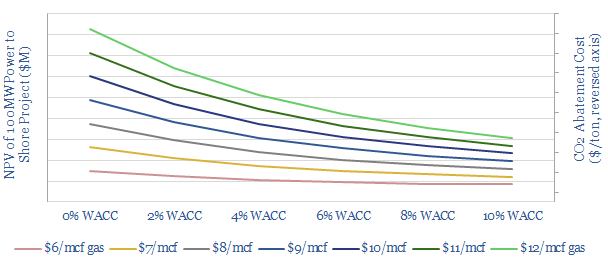
We model the economics of powering an oil platform from shore, using cheap renewable power instead of traditional gas turbines. This can lower upstream CO2 emissions by by around 70%, saving 5-15kg/bbl, for a cost of $50-100/ton. NPVs can be positive with low WACCs and high gas prices, but the primary aim is low-cost decarbonisation.
-
Energy transition market sizing: hydrocarbon, new energies, capital goods and materials?
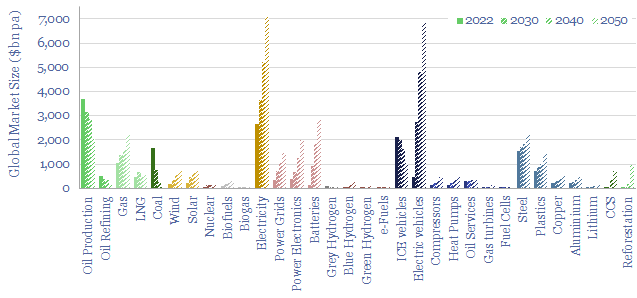
This data-file contains energy transition market sizing analysis, for hydrocarbons, new energies, capital goods and materials in $bn pa, integrating over 1,000 items of energy transition research and our latest roadmap to net zero. In aggregate, energy, materials and transition-related markets double from $25 trn pa to $50 trn pa.
-
Heating-melting: how much energy is needed?
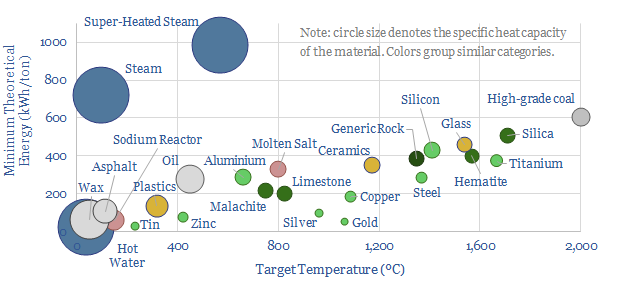
How do we quantify the minimum energy needed to heat materials and melt materials? This data-file calculates values, in kWh/ton, from first principles, based on target temperatures, specific heat capacities and latent heat capacities. A good rule of thumb is 25 kWh of useful energy to heat each ton of material by each 100ºC.
-
Shale EOR: the economics
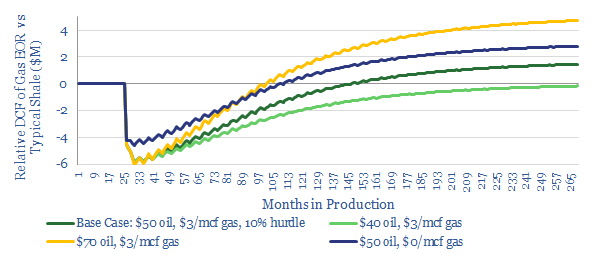
This model assesses shale-EOR economics, as a function of oil prices, gas prices, production-profiles and capex costs. 15-20% IRRs are attainable in our base case. Economics are getting increasingly exciting, as the technology is de-risked and more gas is stranded in key shale basins.
-
Dreaming of Electric Frac Fleets?
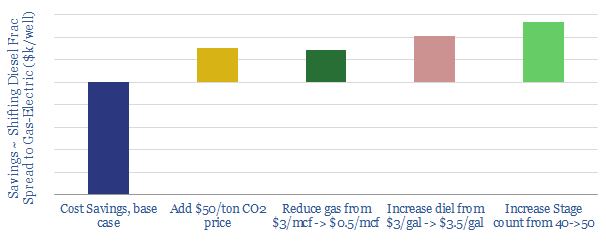
In 2019, the virtues of switching diesel-powered frac fleets to gas-powered electric have been extolled by companies such as EOG, Shell, Baker Hughes, Halliburton, Evolution and US Well Services. The chief benefit is a material cost saving, quantified per well in this data-model, as a function of the frac fleet size, its upgrade costs, its…
-
Permian Pipeline Bottlenecks?
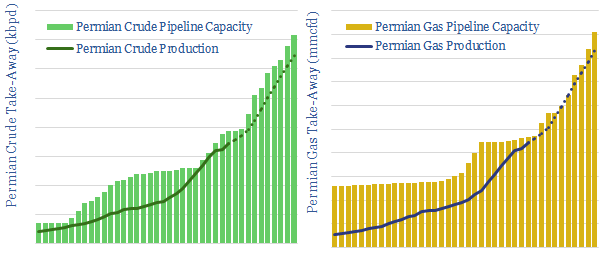
This data-file tracks 50 oil and gas pipelines in the Permian basin — their route, their capacity and their construction progress — in order to assess the severity of pipeline bottlenecks. Oil bottlenecks are moderate, but will ease into 2020. Gas bottlenecks are more severe and remain so.
-
Pre-Salt Brazil: FPSO Tracker
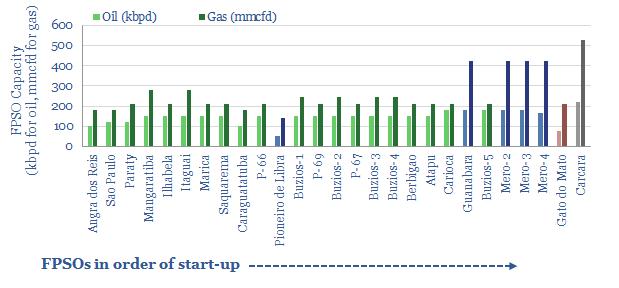
This data-file tracks construction progress of 30 FPSOs being deployed in the Brazilian pre-salt. In each case, we quantify the vessel’s oil and gas handling capacity, development timing and news flow. Pipeline bottlenecks are emerging, and will only be able to export one-third of the pre-salt gas volumes by 2025. The rest must be re-injected.
-
Carbon Credentials drive Capital Costs?
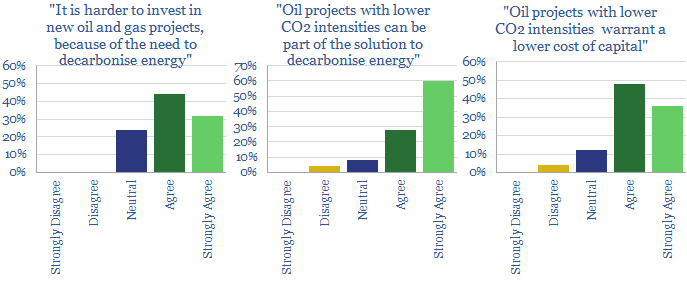
Lower carbon oil and gas may be increasingly valued by investors, earning higher multiples and lower costs of capital, according to our recent survey. 80-90% find it harder to invest in oil and gas today but view lower carbon barrels as an investable part of the solution. Capital costs are quantified for higher- and lower-carbon…
-
Scaling Up Renewables and Batteries
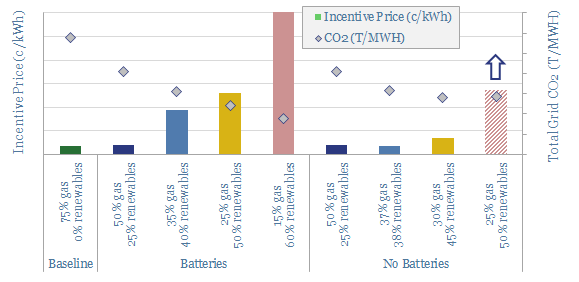
Renewables would cap out at 40-50% of inflexible electricity grids, based on Monte Carlo analysis of wind, solar and batteries. Beyond 50%, new renewables’ curtailment rates surpass 70%, trebling their marginal cost. Batteries also increase incentive prices by 5-25x. Natural gas and demand-shifting are the best backstops.
-
Direct air capture of CO2: the economics?
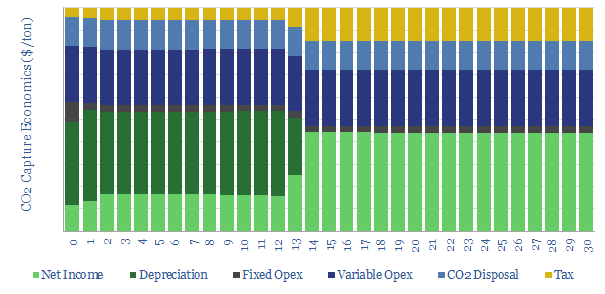
We model Direct Air Capture of CO2 is likely to cost $150-300/ton, based on granular data on its capex, opex and energy-intensity. This data-file outlines the process, our key conclusions, and allows you to stress-test your own input assumptions.
Content by Category
- Batteries (89)
- Biofuels (44)
- Carbon Intensity (49)
- CCS (63)
- CO2 Removals (9)
- Coal (38)
- Company Diligence (95)
- Data Models (840)
- Decarbonization (160)
- Demand (110)
- Digital (60)
- Downstream (44)
- Economic Model (205)
- Energy Efficiency (75)
- Hydrogen (63)
- Industry Data (279)
- LNG (48)
- Materials (82)
- Metals (80)
- Midstream (43)
- Natural Gas (149)
- Nature (76)
- Nuclear (23)
- Oil (164)
- Patents (38)
- Plastics (44)
- Power Grids (130)
- Renewables (149)
- Screen (117)
- Semiconductors (32)
- Shale (51)
- Solar (68)
- Supply-Demand (45)
- Vehicles (90)
- Wind (44)
- Written Research (354)